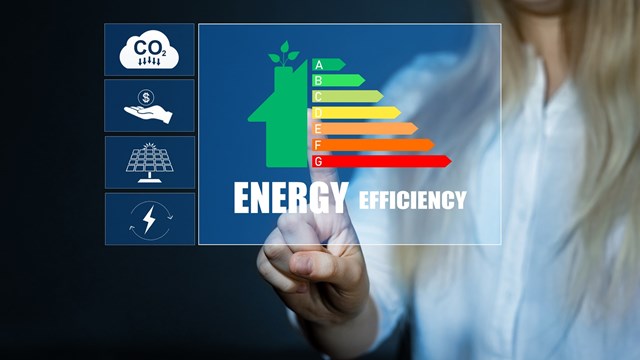
It's on the front page of major newspapers almost daily; it’s often the lead story on nightly newscasts; everyone you know is complaining about it. It’s no secret that the price of oil is reaching sky-high numbers and there doesn’t seem to be any relief in sight. With the price of oil climbing so fast, New Jersey HOA energy bills are increasing at just as alarming a pace, and association administrators are looking for ways to cut their energy costs.
Everyone says they want to save energy, of course, but there are lots of simple solutions out there that aren’t being utilized despite the fact that they are relatively easy to adopt.
“One of the problems in multi-user buildings is that people don’t see a direct connection between their ‘good behavior’ and their utility bill,” says William Amann, who serves on the executive board of the U.S. Green Building Council New Jersey Chapter, and also as chairman of the Somerset County Energy Council. “They tend to think no one else in the building is being conscientious, so why should they? But if everyone did do their part, they would see a difference. So the managers need to get everyone involved by educating them, providing opportunities, and providing feedback.”
While some solutions are physical—making improvements to a building with the aim of reducing wasted energy and making what is used go as far as possible—others are more behavioral and count on the building’s staff and its occupants to help keep down energy prices. The latter approach could include anything from encouraging residents to turn off lights in unused rooms to taking shorter showers in order to conserve water.
“Everyone can do something to help conserve energy and help with energy costs,” says Harvey Klein of Garden State Laboratories, Inc. in Hillside. “It’s just a matter of getting people to really understand the importance of it and not just talk about it, but to actually do it.”
Getting Started
When it comes to association buildings themselves, there is plenty that can be done to cut down on costs.
“The most important thing to do is to have an energy audit performed, to understand how the building is performing,” says Amann. “When done properly, an audit is the only way to identify where or how energy is being wasted.”
The American Society of Heating, Refrigeration and Air Conditioning Engineers (ASHRAE) is the authority on this topic, and has guidelines for performing a Level I, Level II or Level III Audit. Level I is also referred to as a walk-through audit, where a trained person looks for things that are deficient, and also performs a basic analysis of the building energy bills.
“We generally recommend Level II audits, which provide more detail about how the energy is used in the building—i.e. lighting, heating, cooling, hot water, and provide specific recommendations with cost and payback analysis,” Amann says. “In some certain cases, a Level III audit may be warranted, which involves a computer simulation of how the energy in the building is used.”
Making Changes
Buildings are the largest consumers of energy products and should have the greatest impact. Most of the time a great amount of energy is spent on lighting of common spaces such as hallways, entertainment rooms and meeting rooms.
“The largest energy consumer and the easiest thing for the facility people to take care of is the lighting,” says Greg Coleman, market manager for the Office of Clean Energy’s commercial/industrial programs. “Most lighting will be fluorescent tubes, and in most cases you probably will not find much upgrade has been done. In technical terms, going to the places and replacing the T12 lights with T8 lights will help tremendously.”
A lot of places like stairwells and hallways still have the older technology, and replacing lights to compact fluorescent lamps (CFLs) can have a huge impact on the bottom line.
“They are very inexpensive to replace—and you don’t have to do everything at once,” Klein says. “Most times, those changes and improvements can be made with existing building staff. There’s no need to go outside and hire contractors to do it.”
It’s also a good idea to look at those common rooms that aren’t used 24/7, such as meeting rooms or exercise spaces, and add some occupancy sensors.
“It’s a simple concept with any building where there are common spaces used infrequently,” says Coleman. “They might be public bathrooms or meeting rooms that the tenants can use, and all you have to do is replace the light switch with a $60 sensor. When someone walks out of the room, the lights will automatically go off and save energy.”
Another area for energy savings that is considered a low-cost/no-cost type of improvement that most buildings can do involves air filters. Whenever there is a dirty air filter in an AC unit, furnace, or other HVAC component, that piece of equipment will use more energy to heat or cool the building. Cleaning air filters on a consistent, regular basis can make a huge difference in energy efficiency.
Owners Lend a Hand
Individual owners can also do a number of things to save energy and keep costs low.
“Experience shows that people can save 25 percent or more by changing their behavior,” says Amann. “Turning off lights and appliances when not in use, setting back the thermostat when not at home, and other simple things really do make a difference.”
One possible suggestion from Amann is to install submeters for each floor or group of units, and have monthly contests to see who can save the most energy. Once people see that they can actually have an impact, they may be more inclined to help.
Programmable thermostats are also becoming more popular and keeping energy costs down.
“The occupants can preprogram in where they want their heating and cooling based on their schedule,” Coleman says. “If they know they are out the door at 7 am, there’s no point in keeping the condo at a normal living temperature because no one is there. This can be very inexpensive.”
Coleman recommends that association managers and boards help their residents with energy-saving solutions by distributing lists of places where they can buy CFL bulbs and appliances that are more energy-friendly.
“The big thing that occupants can do is the lights, of course, and CFLs are much better in terms of how fast they come on and the range of colors that are available,” Coleman says. “Any time an appliance needs to be replaced, look for Energy Star products. Replacing an old refrigerator can literally save hundreds of dollars each year.”
The Bigger Picture
Although things like solar panels, wind-generated energy and other forms of renewable energy seem like great ideas, they are not always the most practical solutions for commercial condos and homeowner associations, especially with their high initial costs.
“The clean energy programs do have incentives to reduce that first cost, training available, qualified contractors to help, but at the end of the day you really have to have a need other than reducing costs to make renewable energy cost-effective for condos,” Coleman says. “There are always folks who really want to give back to the community and contribute by being as green as they can, and wind power is definitely the way to do that, but it’s not something that is generally done because they want to save money or reduce costs.”
According to Amann, the cleanest, most cost-effective power is the power you never use.
“Renewable energy like solar is great, but it should only be used to produce the power use that we cannot otherwise eliminate,” says Amann. “The big opportunities really depend on the types of systems that exist in the building, and whether they are centralized or serve individual units. Make sure that boilers, chillers, cooling towers and domestic hot water heaters are efficient, and replace those that are not with newer technologies. In some cases, the building may be a good candidate for combined heat and power (CHP), where you can produce your own electricity, and use the waste energy to provide heat or domestic hot water.”
Help Is Out There
During the energy crisis in 1979, many buildings tightened up and reduced their energy somewhat.
“But we discovered that ‘sick building syndrome’ was one of the side-effects,” says Amann. “In order to save energy, and move toward healthier, high-performance buildings, we need an integrated, comprehensive approach. LEED for Existing Buildings and Operations provides the framework, and a rating system, to operate a building in a sustainable, healthy way.”
You can have an assessment done of your building by contacting the U.S. Green Building Council at www.USGB CNJ.org, and asking for referrals to green building consultants in New Jersey. The LEED EB rating system includes energy reduction as a primary measure, but also looks at the impacts of the building site, water conservation, materials, and indoor environmental quality.
Board members can also get ideas about solutions by going to www.nj cleanenergy.com/residential/tools-and-resourcesand clicking on “Residential On-Line Analysis,” which will analyze the condo building, and provide recommendations for energy conservation measures.
Another resource is Energy Star, at www.energystar.gov, a joint program of the U.S. Environmental Protection Agency and the U.S. Department of Energy. Klein recommends that board members and homeowners contact their local utility company, the New Jersey Smart Start Program or the New Jersey Board of Public Utilities (NJBPU) for more useful information or energy-saving ideas.
“New Jersey is fortunate to have the ‘Smart Start’ program, which is provided through the Office of Clean Energy from the Board of Public Utilities,” Amann says. “There are incentives available for design assistance, as well as ‘rebates’ for installing more efficient HVAC, lighting, motors, etc. There is also a federal tax credit for energy efficiency measures.”
Keith Loria is a freelance writer and a frequent contributor toThe New Jersey Cooperator.






Leave a Comment